Best Windows laptops: Top Windows 10 and 11 laptops to consider
You need a quality Windows laptop for wherever you work - here are some of the best around


For Windows users, selecting a laptop for work can be a bit of a challenge. For starters, there's an abundance of choice, with Windows making up the vast majority of the laptop market, bar Macs and Chromebooks - though you can technically get versions of Windows on both of those as well.
On top of that, there are various elements to consider, such as battery life, display quality and also suitability for remote work. And that's without even mentioning one of the biggest considerations: price.
To help you make the right choice, we've curated a list of the best Windows laptops for 2022. While some of the laptops on this list will ship with Windows 11 pre-installed, some are running Windows 10 - and may not be eligible for an upgrade straight out of the box. If that's a factor in your decision-making, double-check the compatibility requirements for Windows 11 before you make your purchase.
What to look for
As a rule of thumb, it's worth looking for a device released within the last two years. This will mean you'll have the most up-to-date software, and at least five years of updates, as well as newer CPU and display technologies to work with. This is also the best way to guarantee your machine is capable of installing Windows 11 as the newer the machine, the more likely it is to meet the requirements.
It's also worth looking at price. Finding the best laptop within your budget is key, but it is also important to evaluate your needs and make sure you don't spend more on features you won't really use. How good a display do you need, for example? Does it need a touchscreen and or a stylus? Generally, the better the display, the more expensive the model will be, but this could also be an area where you can save some cash.
A higher-resolution display can also be an unnecessary drain on battery life, and this is a key consideration for those that intend to travel a lot. A score of ten hours or more in our benchmark tests indicates a laptop should be able to keep up with a full day of work, but you may find that if you're going to spend most of your time at your desk, it's worth taking a hit on battery life for the sake of more powerful internal hardware.
FAQs
Windows 10 or Windows 11?
With Windows 11 launching at the end of 2021, the world's most popular desktop operating system was given a fresh overhaul. However, the previous version has still retained the majority of users, with comparatively few making the move to Windows 11.
There are a few reasons to upgrade to Windows 11, particularly from a workflow perspective as it's more geared towards collaboration and hybrid work. It comes with a dedicated Microsoft Teams button, for instance, found in the Start menu. This is in addition to a range of newer features that won't be on Windows 10, such as the new screen capture tool and Snap Layouts.
However, staying with Windows 10 will offer more choice as not all laptops will meet the system requirements for Windows 11. This might also appeal to those on a tighter budget that can do their work with lower CPU power and less RAM. The best advice for those unsure is to cover both bases by selecting a machine that does meet the Windows 11 system requirements, so that they can decide when to upgrade at their leisure.
Do I need a 2-in-1?
When it comes to Windows-based laptops, there are plenty of options for convertibles and models with tablet modes. These often come with a stylus in the box - though you might have to buy one separately. The first point to make here, is that you'll have more detachable components (including keyboards, pens, and so on) so there are more bits to keep track of.
For those that work remotely, or from different places, 2-in-1 are generally lighter and more compact and offer more portability than a larger traditional laptop. The trade off here, usually, is that you have a smaller display, so less screen space. And this sometimes means a smaller battery, or lower CPU specs.
What size laptop should I buy?
When we talk about laptop size, we usually mean screen size: so a 15.6in laptop is a machine with a screen that measures 15.6in on the diagonal. There are laptops as small as 10in and as large as 18in, though these are relatively rare and the machines on this list are all between 13in and 16in.
The size of the screen you need is dependent on the work you do. If you work across multiple apps and tabs, and are not likely to have an external monitor, a display on the larger end is probably more suitable. The larger screen will often allow more space for the keyboard - possibly a numerical one - and maybe some extra functionality.
However, a larger screen will be that little bit harder to take with you; just ask anyone who has ever had to fit a 17in machine into a regular rucksack. 15.6in is fairly manageable for carrying around, though the thinnest and lightest models tend to be 14in and smaller.
Microsoft Surface Laptop Studio
Best Windows 11 experience
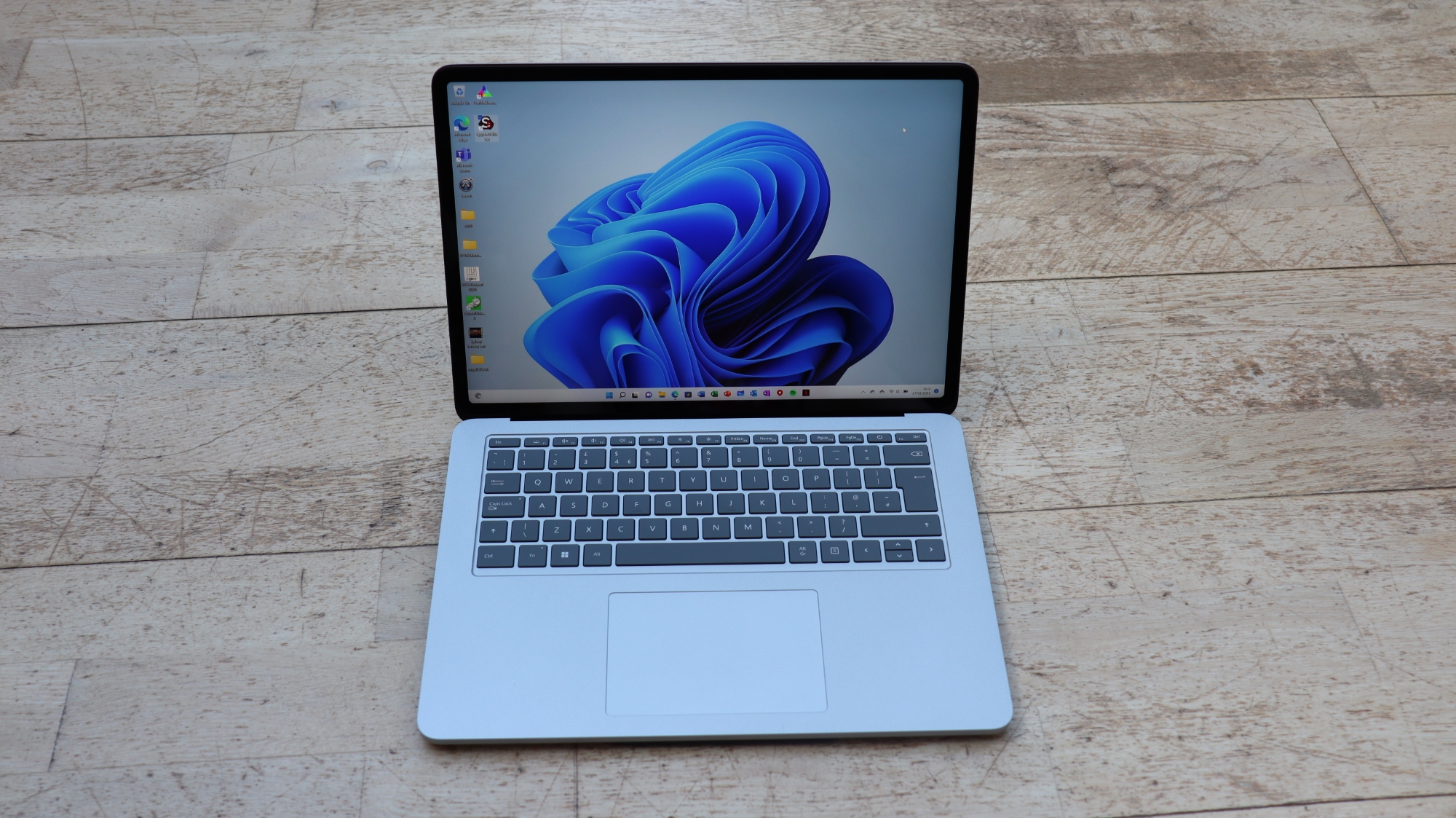
| Pros | Cons |
| Superb tablet mode | No memory card reader |
| Long battery life | Expensive |
Microsoft's own laptop brand comes in a number of guises, but few have been as well-received as the Surface Laptop Studio. It's an innovative 2-in-1 with a high-end spec list (and price) that feels like everything the Surface range should be.
It features a crisp 14.4in touchscreen display that has a buttery smooth 120Hz refresh rate. With our calibrator, the Surface Laptop Studio scored a perfect 100% for sRGB colour coverage and hit a peak brightness of 440cd/m2. For comparison, that was just slightly above the excellent Asus ProArt Studiobook Pro 16 OLED which hit 99% for sRGB coverage and 399cd/m2 for brightness under the same tests.
Processing power might not seem like value for money with the Surface Laptop Studio; it notched up a decent score under the IT Pro in-house compute benchmark, hitting 129 overall, but that's way off the likes of the Asus ProArt Studiobook Pro 16 OLED or an M1-based MacBook. This may be off-putting on paper, but in actual day-to-day use the Surface Laptop Studio is a competent work machine.
There is, however, more to be said about its battery life; under our looped video test, the Studio lasted 16hrs 52min, which is just behind the 2020 M1-based MacBook Pro (17hrs 31mins). It's an excellent option for those likely to be working sans power supply, easily lasting a whole work day - possibly two if the job isn't too taxing.
Sure, Microsoft's Surface Laptop Studio is a bit on the expensive side, but few can beat it for battery life and that's gradually becoming more important as we move towards a 'work from anywhere' hybrid office future. It's also competent in other areas with its stunning display and innovative tablet modes. This is a Microsoft Surface laptop, as it should be.
| CPU | Intel Core i7-11370H |
| RAM | 32GB |
| Screen | 14.4in, 2,400 x 1,600, LCD touch screen |
| Dimensions | 323 x 228 x 19mm |
| Weight | 1.82kg |
Price when reviewed: £2,399 exc VAT
Read our full Microsoft Surface Laptop Studio review for more information
Dell Inspiron 15 7000
Best enterprise all-rounder
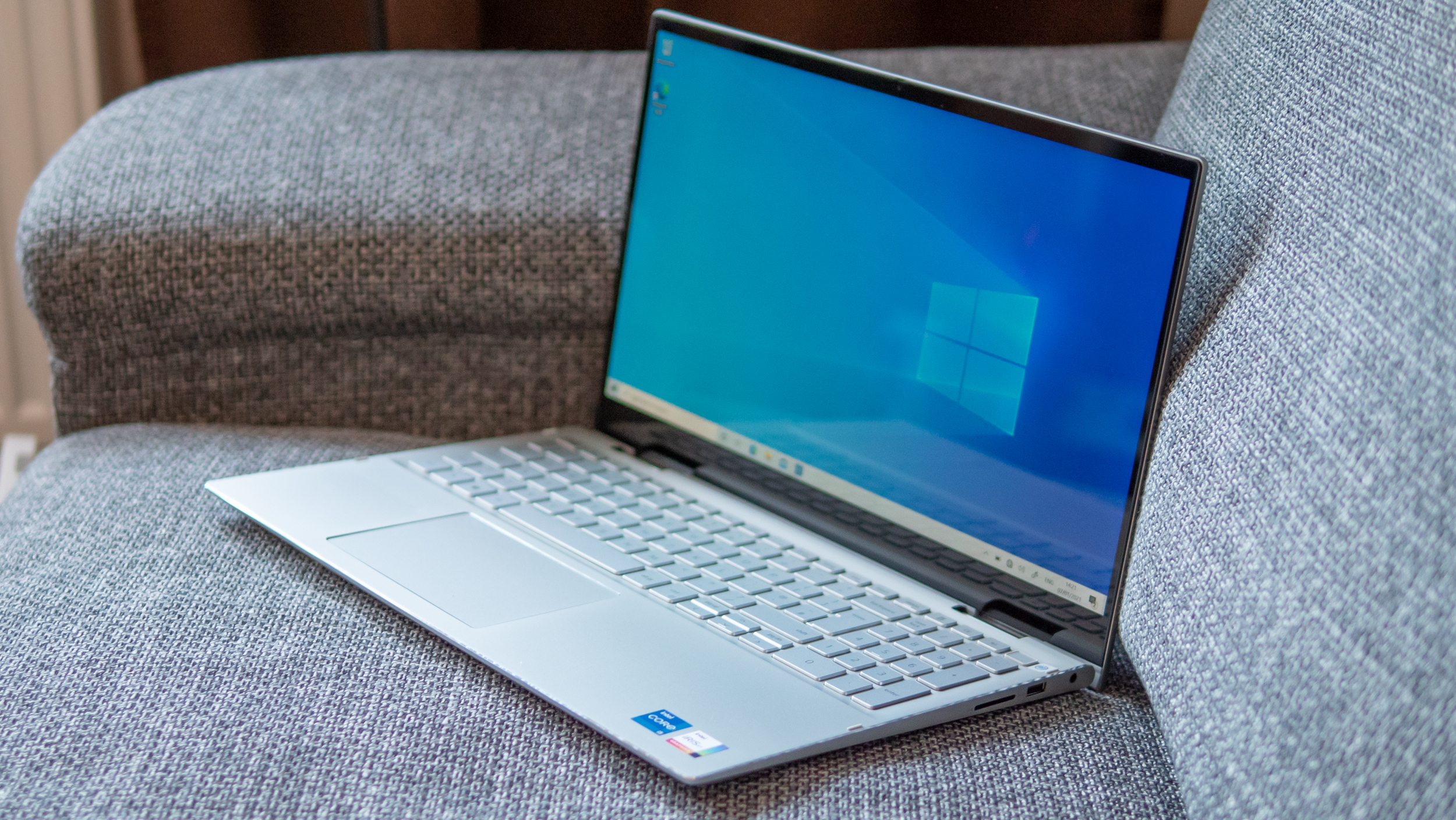
| Pros | Cons |
| Value for money | Battery life could be longer |
| Speedy processor | Row 2 - Cell 1 |
| Crisp display | Row 3 - Cell 1 |
Dell's Inspiron 15 7000 is a mid range machine, sitting somewhere between the 5000 series and the XPS. It has a slightly higher spec sheet than the former but is nowhere near as expensive as the latter, making it a solid work machine even if it lacks a little sparkle.
It features a stunning 1,920 x 1,080 IPS panel which covered 97% of the sRGB colour space as measured by our tests. That isn't much lower than the considerably pricier Dell XPS 15, though it isn't a match for brightness, peaking at 330cd/m2. But this is where value for money comes into play; it almost matched a display on a screen that's three times more expensive.
On the other hand, processing power is very much linked to price, and that does show with the Inspiron's Intel Core i5 chip. It managed an overall compute score of 119 in our in-house benchmarks, which is a little lower compared to other, more expensive Dell offerings. Nevertheless, this is a fine score for the majority of use-cases, and from our own experience of the machine it's more than capable of keeping up with a busy workload.
When it comes to battery life, the Inspiron fell a little short, lasting just 8hrs and 16mins in our looped video test which, while not a bad score in general, makes it one of the poorer performers on this list. However, it does come with a 53W charger that can take it from flat to full in less than 2 hours.
There are lots of limited elements to the Dell Inspiron 15 that are largely down to its pricing, such as the processing and battery specs, but in actual daily use, there is a real sense of value for money. For just £691 it has a surprisingly good display, and a stylish design and despite its benchmarks, its runs very smoothly. It's an excellent option for those that want a do-it-all workhorse on a budget.
| CPU | Intel Core i5-1135G7 |
| RAM | 12GB |
| Screen | 15.6in, 1920 x 1080, IPS |
| Dimensions | 356 x 238 x 18mm |
| Weight | 1.5kg |
Price when reviewed: £691 exc VAT
Read our full Dell Inspiron 15 review for more information
Samsung Galaxy Book S
Best Arm-powered Windows machine
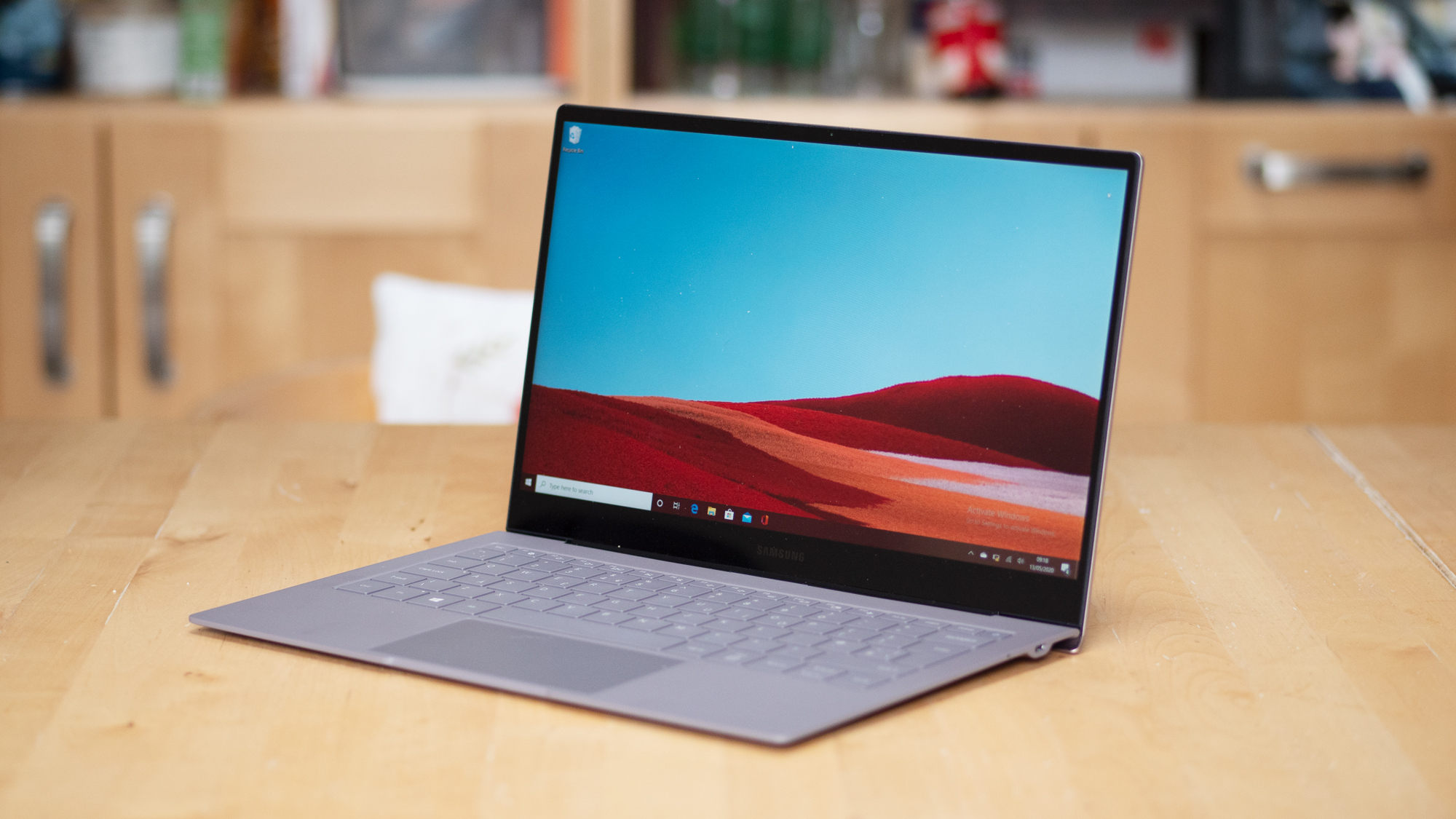
| Pros | Cons |
| Thin, lightweight design | x86 compatibility troubles |
| Gorgeous display | Row 2 - Cell 1 |
| 14-hour-plus battery life | Row 3 - Cell 1 |
You might be understandably hesitant about buying an Arm-powered Windows laptop; even if you can get past the still-present software compatibility issues, there are relatively few standout examples. Microsoft's own efforts haven't really wowed us, but Samsung might have the laptop to change minds. The Galaxy Book S, developed in partnership with Qualcomm, features a Snapdragon SoC and offers an excellent Windows experience.
This sub-£1,000 machine is beautifully designed, has an ultra-slim chassis, a stunning touchscreen display and managed almost 15hrs of battery life in our tests. It's not just a great Windows 10 machine, it's a brilliant example of how good Windows can be with Arm-power.
The display is, as one would expect with Samsung, excellent; with our calibrator, it showcased 94.5% sRGB colour gamut coverage, which beat the Microsoft Surface X Pro (91.7%). It also proved highly capable of handling colour-sensitive workloads in day-to-day use and offered a peak brightness of 378cd/m2, which was more than adequate for most conditions barring super bright direct sunlight.
When it comes to processing power, the Arm silicon required a GeekBench 5 test, of which the Galaxy Book S hit 2,721 for multi-threaded performance. This is just a smidge bellow the Surface X Pro, which hit 2,891. However, there is an issue with x86 compatibility (on both the Book S and the Surface X Pro) with users limited to Arm-native software or emulated 32-bit x86 apps.
Whatever you do use the Book S for, however, you'll find it a machine with staying power. In our looped video test, it lasted 14hrs 28mins. This isn't just good for an Arm-based machine, it's good for Windows laptops in general, even beating the Intel-based Dell Inspiron 14 7000.
Compatibility issues aside, the Samsung Galaxy Book S has shown us what Arm-based laptops are capable of. From its stunning display and long battery to its surprisingly competitive processor, the Galaxy Book S is a brilliant sub-£1,000 Windows laptop.
| CPU | Octa-core Snapdragon 8cx SoC |
| RAM | 8GB |
| Screen | 13.3in, 1920 x 1080, TFT |
| Dimensions | 203 x 305 x 12mm |
| Weight | 961g |
Price when reviewed: £833 exc VAT
Read our full Samsung Galaxy Book S review for more information
Dell XPS 15 (2021)
Best mobile workstation
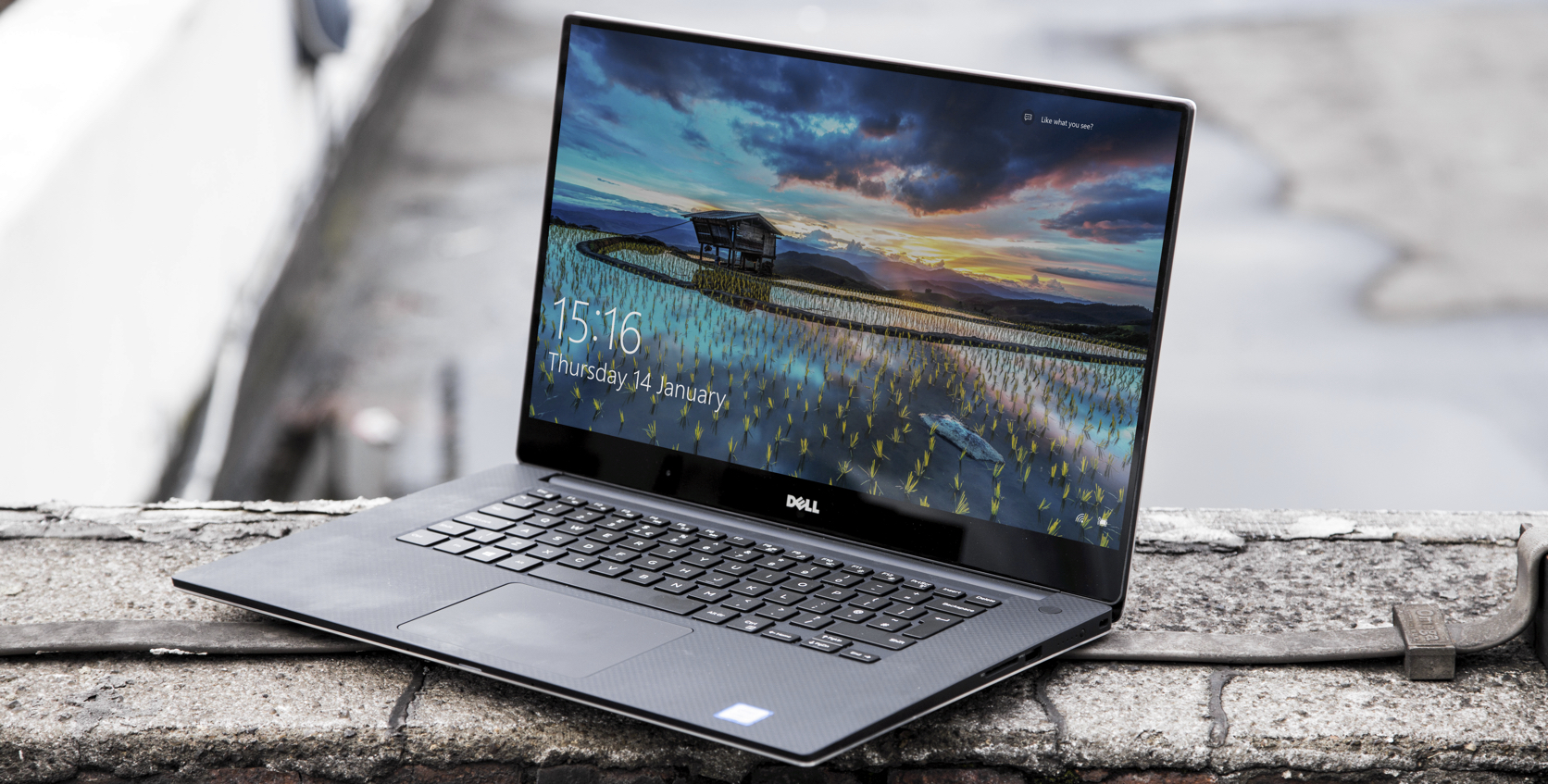
| Pros | Cons |
| Vivid IPS display | Meddling battery |
| Snappy processor | Only 4GB RAM option |
It's an understatement to say that Dell makes great laptops and one of its absolute best has often been the XPS range. The Dell XPS 15 (2021) is another example of that with its winning combination of looks, build quality and price.
Starting with its screen, the XPS 15 houses a 3,840 x 2,400 4K IPS display that produces superb colour results. With our calibrator, the XPS showcased a flawless 100% sRGB colour coverage and hit 495cd/m2 for peak brightness. It beats the MacBook Pro for pixel density, such is its quality. The only gripe we had was that its maximum refresh rate was just 60Hz, which is a little low for its price - although you can shave this down by opting for a 1080p panel.
When it comes to CPU power, the XPS justifies its high price; it houses a 1.9GHz octa-core Intel Core i7-11800H processor, with 32GB of RAM, and it came out trumps in our benchmark tests. Its overall score of 272 topped the M1-based MacBook Pro which hit 227. Perhaps the most pleasing aspect, however, is how silently the machine runs; even the most intensive of workloads was conducted with very little fan noise.
The peace and quiet, however, won't feel like much of a benefit when the machine runs out of juice. Sadly, it might do so quicker than you'd like; in our looped video test, the XPS only managed 7hr 16min, which is the lowest score on this list. How long it lasts in day-to-day use very much depends on your workload and how intensive it is though, and we found it had enough for a standard eight-hour shift.
Part of the reason its battery life is so poor is due to its power-hungry display, although we have to admit the results are stunning. This is in addition to a snappy processor and pleasing design. Dell's XPS range is one of the best around, and the XPS 15 is the best of the lot.
| CPU | Intel Core i7-1180H |
| RAM | 32GB |
| Screen | 15.6in, 3840 x 2400, IPS |
| Dimensions | 354 x 230 x 18mm |
| Weight | 2kg |
Price when reviewed: £2,040 exc VAT
Read our full Dell XPS 15 review for more information
Acer Aspire 5 A514-54
Best value for money
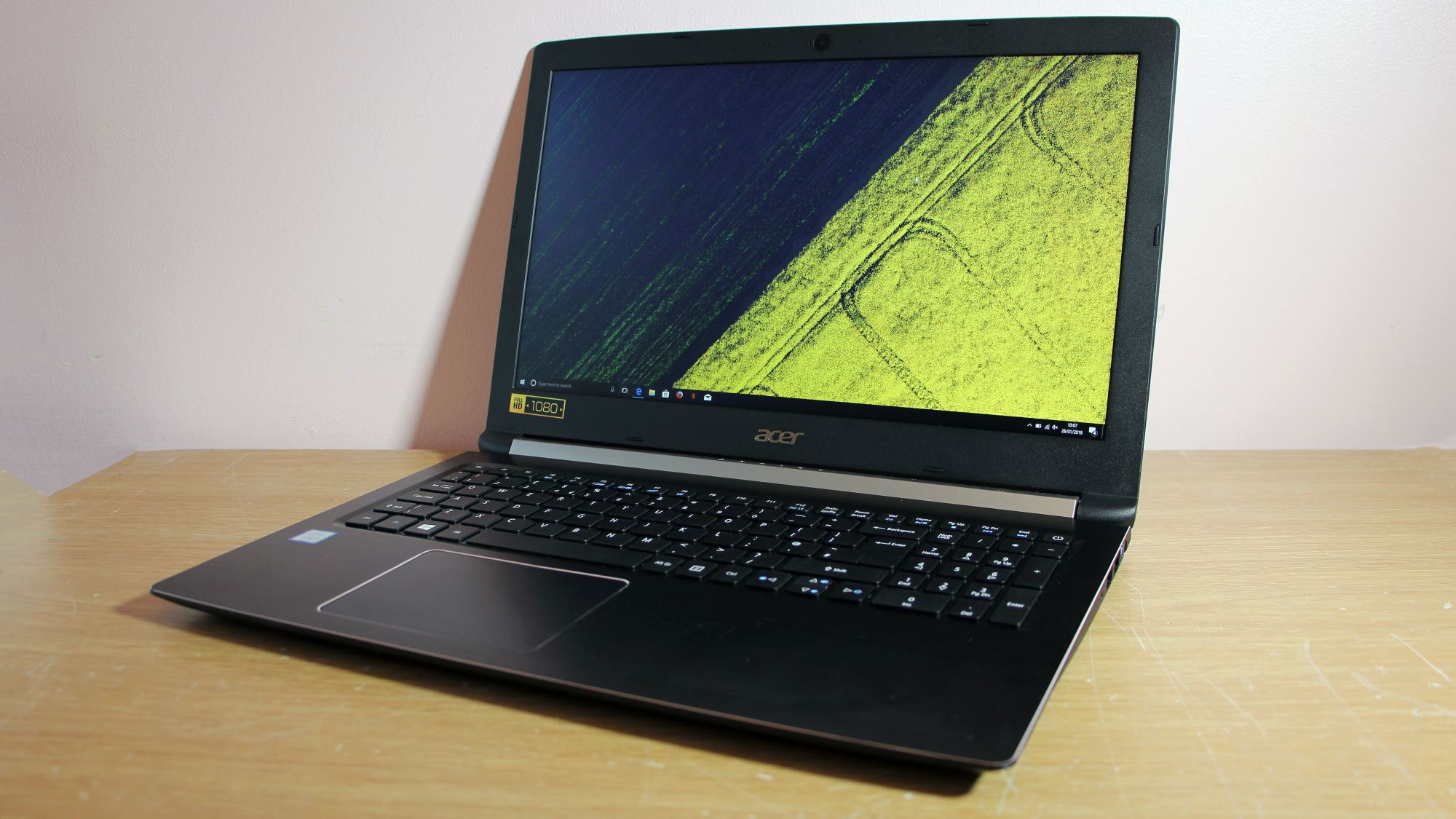
| Pros | Cons |
| Value for money | Low battery life |
| Decent keyboard | Low quality build |
| Snappy processor | Average screen |
If you're not in the market for the latest and greatest and have no desire for the flashiest machine money can buy, then the Acer Aspire 5 might be just the ticket. This is a sub-£500 laptop and quite frankly it looks like most of the cost was saved on its sandblasted metal design.
Its 1,920 x 1,080 IPS screen leaves a little to be desired. In our calibrator tests it only managed to reproduce 61% of the sRGB colour space. That makes it a poor choice for those that need high colour quality, or even a decent standard for video conferencing.
However, more love and care has been given to the insides. Its Intel Core i5 chip provides decent value for money, and under our in-house benchmark, it notched up an overall compute score of 91. That doesn't sit well compared to current-gen MacBooks or Surface Pros or even most other Windows laptops, but it is good for its price. The Asus Zenbook 14 (UX425J) is roughly £100 more and that only managed a score of 88.
When it comes to battery life, the Aspire 5 offered up 7hr 43min in looped video test - that may look poor, but it's actually slightly better than the much pricer Dell XPS 15 listed above. However, for actual use this sub-£500 machine is good enough for most workers and will see you through a shift without trouble.
There are much more expensive machines that can't offer a typing experience as comfortable as the Aspire 5, too. Its sunken keyboard gives 1.4mm of tread, and its keys are soft and comfortable, with a pleasing bounce and subtle click sound. In fact, the keyboard is the best element to sum up the Acer Aspire 5: thrill-free efficiency. Not bad for £416.
| CPU | Intel Core i5-1135G7 |
| RAM | 8GB |
| Screen | 14in, 1,920 x 1,280, IPS |
| Dimensions | 328 x 223 x 18mm |
| Weight | 1.45kg |
Price when reviewed: £416 exc VAT
Read our full Acer Aspire 5 review for more information
Razer Book 13
Best high-performance ultraportable
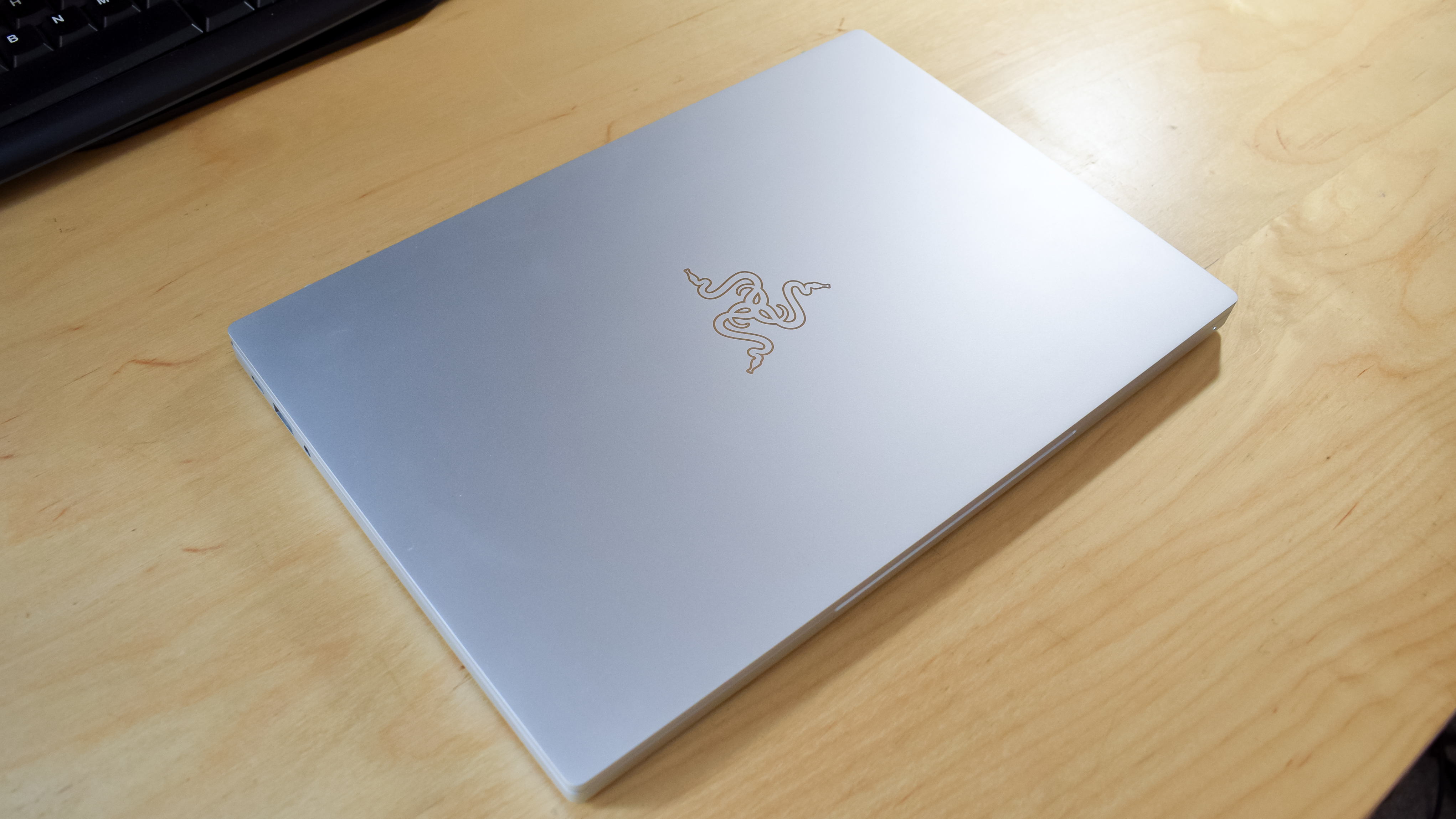
| Pros | Cons |
| Design quality | Expensive |
| Great keyboard | Row 2 - Cell 1 |
| Fast performance | Row 3 - Cell 1 |
You may know Razer more for its high-performance gaming equipment, but that shouldn't distract from the fact it has managed to produce a Windows laptop that can match the likes of Dell and Apple for performance and design.
In fact, the Razer Book 13 is a winner across the board with its gorgeous design, brilliant display and snappy processor. With a vast array of connectivity options, a smooth trackpad and decent battery life, the Razer Book 13 is an outstanding ultrabook that goes toe-to-toe with the biggest guns on the market.
To start, its 13.4in FHD touchscreen display is fantastic. With our calibrator, it showcased 98% of the sRGB colour spectrum, beating Samsung's Galaxy Book S and falling just short of the excellent Dell XPS 15. Simply put, the Razer's display is capable of vibrant imagery.
Its processing chops also impressed, notching an overall compute score of 124 in IT Pro's in-house benchmark tests. Not only did that score match the Apple MacBook Pro, it beat the Galaxy Book S. What's more, it also came out above the Dell Inspiron 15 7000 which hit 119 in the same test and costs a little less.
The Razer Book even performed well in our intensive looped video battery test, offering up 10hrs 48mins, which, in the context of price, is very good. Dell's XPS 15, for example, achieved almost three hours less for almost double the cost.
Adding all these scores up presents an appealing package. Razer may not be known for work machines, but the Razer Book 13 might just change that. It's a complete package with its sharp display, snappy processor and long battery life. That's without even mentioning its comfortable keyboard and efficient trackpad. With laptops like this, Razer might just cut through the competition.
| CPU | Intel Core i7-1165G7 |
| RAM | 16GB |
| Screen | 13.4in, 1,920 x 1,200, IGZO touchscreen |
| Dimensions | 296 x 199 x 15mm |
| Weight | 1.4kg |
Price when reviewed: £1,317 exc VAT
Read our full Razer Book 13 review for more information
MSI Prestige 14 Evo
Best for productivity
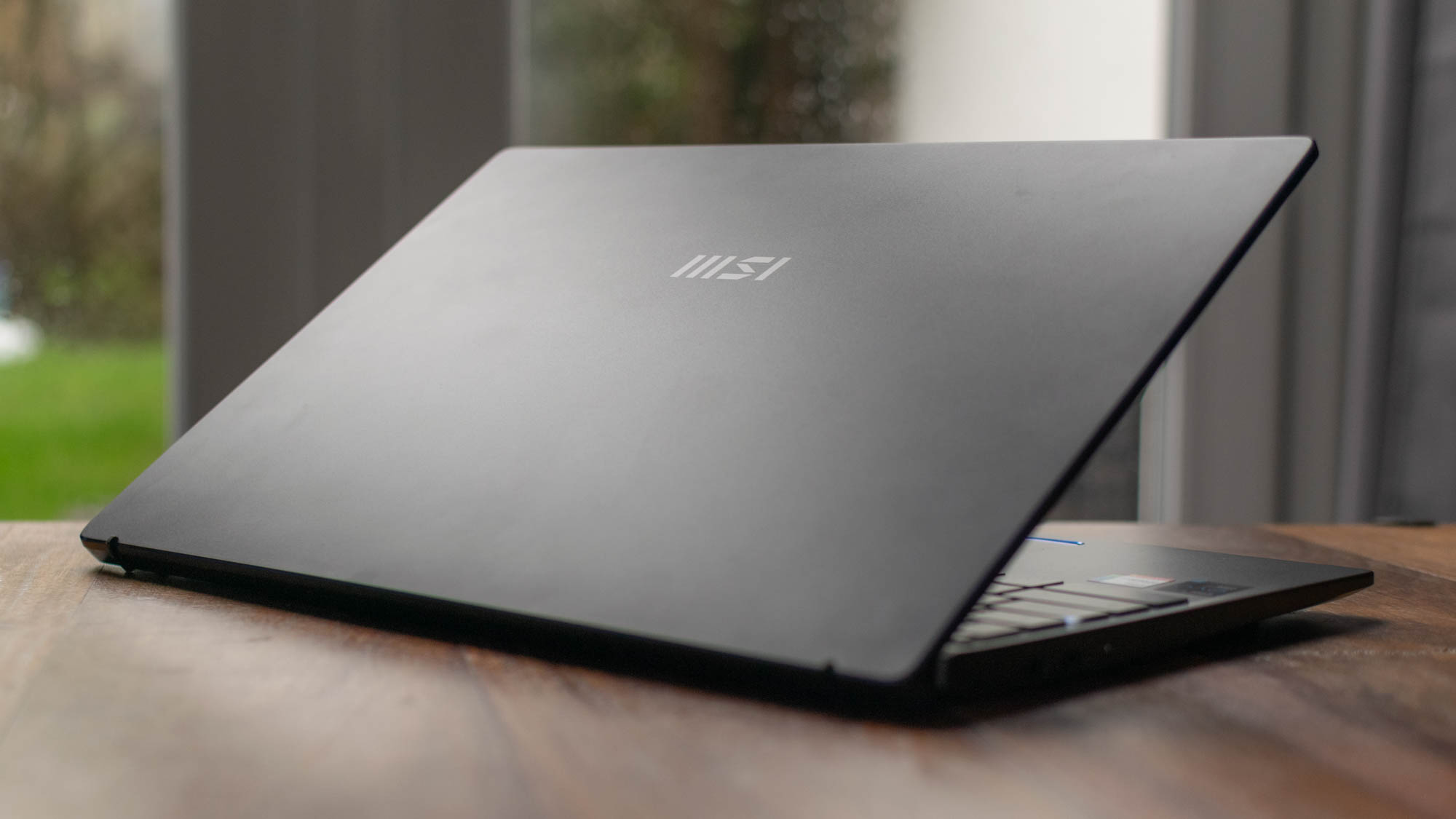
| Pros | Cons |
| Value for money | Noisy |
| High performance | Row 2 - Cell 1 |
| Pleasing design | Row 3 - Cell 1 |
A business laptop is a slightly unusual area for MSI; the Taiwanese company is best known as a producer of gaming fare, but that hasn't stopped it from building a Windows machine of high quality.
The MSI Prestige 14 boasts a 14in 1,080p panel that scored 95% for sRGB colour coverage with our calibrator tests. That actually beat the Samsung Galaxy Book S and the only mark against the Prestige is a slight oversaturation of reddish tones.
With its Intel Core i7 chip and 16GB RAM, the Prestige managed an overall compute score of 134 in our in-house benchmark test. While not able to match the Dell XPS 15, there are few offer machines on this list than can reproduce that score - the Razer Book 13 hit 124 and the Dell Inspiron hit 119, for comparison.
Its battery life was also good, hitting 10rs 15mins in our looped video test. That's just over 3omins less than the similarly priced Razer Book 13. It also performed well in actual day-to-day use, sailing through most workdays with ease. Although admittedly, it does make quite a lot of noise when under strain.
That being said, this is a relatively cheap machine; while £1,000 might not look like a bargain, its capabilities are on par with much more expensive fare, such as the Dell XPS 15. That also includes a screen that can go toe-to-toe with the likes of Apple and Samsung.
It is probably one of the least well-known names on the list, certainly in terms of Windows-based work machines. But with its snappy processor, stunning display and overall build quality, the MSI Prestige 14 Evo is worthy of a place among the likes of Dell, Acer and Samsung. It could well be described as the dark horse of laptops.
| CPU | Intel Core i7-1185G7 |
| RAM | 16GB |
| Screen | 14in, 1920 x 1080, IPS |
| Dimensions | 319 x 219 x 15.9mm |
| Weight | 1.29kg |
Price when reviewed: £999 exc VAT
Read our full MSI Prestige 14 Evo review for more information
Acer Swift 5
Best for work on the go

| Pros | Cons |
| Super lightweight | Poor sound quality |
| Nice design | Row 2 - Cell 1 |
| Comfortable keyboard | Row 3 - Cell 1 |
Acer has managed to cram a whole lot of quality into the small frame of its Swift 5. The 14in touchscreen display, for instance, is excellent. Tested with our calibrator it offered up 98.3% for gamut colour coverage - almost matching the more expensive Dell XPS 13. What's more, it packs a huge punch of brightness, peaking at 405cd/m2, making it superb for travelling about in the sunshine.
Powering the display is a 2.4GHz Intel Core i7 processor, matched with 8GB of RAM. The exact same chip is found in the Dell Inspiron 15 7000, which might explain its comparable benchmark score of 122 (119 in the Inspiron). The real-life result is a competent machine, capable of handling all elements of modern office workflows, like video conferencing, basic Photoshop work and projects across multiple apps and tabs.
However, the more intensive the workload, the more likely the Acer Swift will die on you. Under our looped video test, the Swift lasted 9hrs 24mins, which is by no means poor - that's an hour and twenty minutes more than its predecessor. It can certainly make it through a standard shift, but for those on the go, any super intensive work - video editing, streaming and so on - will need the charger and socket because it will go relatively quick.
The main grumble we had with the Acer Swift 5 was the low quality of the speakers - it only seemed to affect video, which needed to be ramped up to the full 100%. Even then it was hard to hear.
That aside, the Swift is a great Windows laptop, with its stunning display, snappy processor and decent battery life. What's more, it weighs just 990g, making it a rucksack essential. If your work isn't too CPU-intensive, it's a great option for the remote worker.
| CPU | Intel Core i7-1135G7 |
| RAM | 8GB |
| Screen | 4in, 1920 x 1080, Corning antimicrobial Gorilla Glass |
| Dimensions | 15 mm x 319 mm x 207 mm |
| Weight | 990g |
Price when reviewed: £833 exc VAT
Read our full Acer Swift 5 review for more information
How we test
Every laptop on this list will have been put through a series of performance tests. We use these to measure comparable performance for the display, the CPU and the battery. To test the display, IT Pro uses a calibrator and the Display Cal software to measure both brightness and sRGB colour coverage. For the latter we look for a strong representation of the sRGB colour spectrum, with a score above 94% generally seen as good.
To measure CPU performance we run a series of in-house tests consisting of three elements: the first is an image conversion that assesses the machine's single-threaded speed. The second is a video encoding test that looks at its multi-threaded capabilities and the final test is a multitasking one that measures both single and multicore speeds. These tests give numbers for both single scores and overall performance.
We also run GeekBench 5 performance tests, largely to confirm the accuracy of our in-house benchmarks, but in some case as the only CPU test. This is the case with Qualcomm-based laptops, for example.
When it comes to battery life we put each laptop through a looped video test. This is done with a video file that repeats until the battery runs out. The machine itself is set to flight mode, so it can't be interrupted, and the display brightness fixed at 170cd/m2. Generally a laptop that lasts around 10hrs is seen as good, though high priced laptops are expected to offer over 12hrs.
Get the ITPro daily newsletter
Sign up today and you will receive a free copy of our Future Focus 2025 report - the leading guidance on AI, cybersecurity and other IT challenges as per 700+ senior executives
Bobby Hellard is ITPro's Reviews Editor and has worked on CloudPro and ChannelPro since 2018. In his time at ITPro, Bobby has covered stories for all the major technology companies, such as Apple, Microsoft, Amazon and Facebook, and regularly attends industry-leading events such as AWS Re:Invent and Google Cloud Next.
Bobby mainly covers hardware reviews, but you will also recognize him as the face of many of our video reviews of laptops and smartphones.
-
 Bigger salaries, more burnout: Is the CISO role in crisis?
Bigger salaries, more burnout: Is the CISO role in crisis?In-depth CISOs are more stressed than ever before – but why is this and what can be done?
By Kate O'Flaherty Published
-
 Cheap cyber crime kits can be bought on the dark web for less than $25
Cheap cyber crime kits can be bought on the dark web for less than $25News Research from NordVPN shows phishing kits are now widely available on the dark web and via messaging apps like Telegram, and are often selling for less than $25.
By Emma Woollacott Published